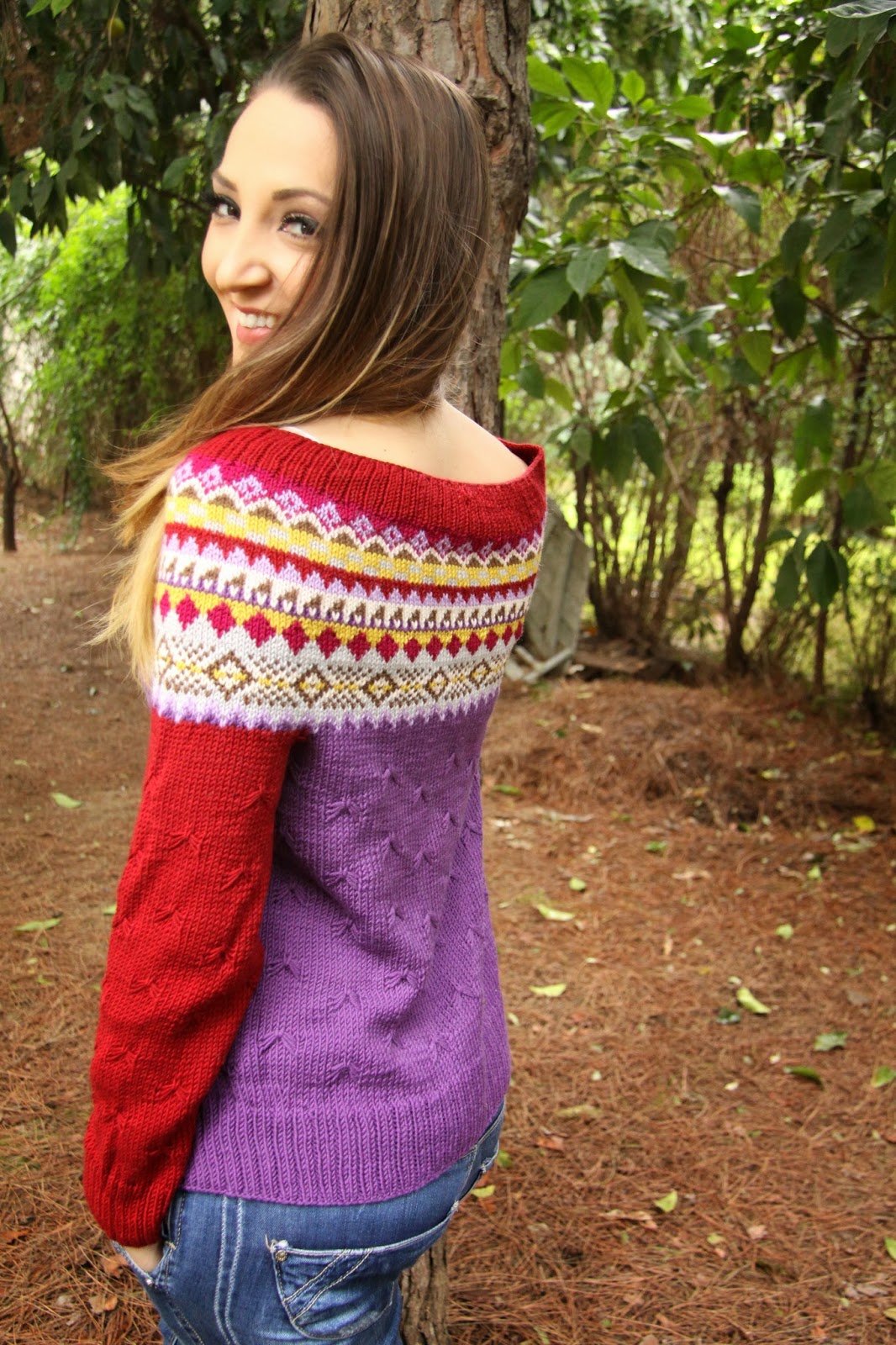I love working and experimenting with various stitches, but I adore working with colors too! I fins fascinating the mixture of colors and patterns and the possibilities are endless.
If you are not a very experienced knitter and are hesitant to work with more colors, I suggest to start first with stripes, which are the simplest way of colorwork. In this case, color is changed always at the beginning of the row.
If you are not a very experienced knitter and are hesitant to work with more colors, I suggest to start first with stripes, which are the simplest way of colorwork. In this case, color is changed always at the beginning of the row.
When working in stripes, the ending and beginning of each color is very clear from row to row on the right side of the knitting. On the wrong side of work, the separation is not so clear. The 2 colors are mixed on the last and first row of each color
At the beginning of the row the stitches are a little looser by the color change. This can be easily fixed at the end, by tighting up the loose ends when weaving in.
There are two different techniques for colorwork:
1. Stranding, where two or three different colors are worked within a row.
2. Intarsia, where there are more colors and larger patterns and the stranding of the yarn behind the work is not suitable. The wrong side of work is clearer with this method.
Stranding
With stranding there are several small patterns that are repeated along the row and there are two or sometimes three different colors required. In this method, we work every time one color and carry the other/s behind our work. When we change color, we bring the new color on top of the other, spread the stitches on the RH needle, so that the float is smooth and work with the new color.
With this method, we have horizontal floats of yarn on the wrong side of our knitting. That results to a thicker and warmer garment, therefore thinner yarns are more suitable.
With this method, we have horizontal floats of yarn on the wrong side of our knitting. That results to a thicker and warmer garment, therefore thinner yarns are more suitable.
Fair Isle sweaters have gotten their name from Fair Isle, one of the islands of Scotland. Their main characteristic is the use of symmetrical geometric patterns, the thin yarn and the subtle colors.
Scandinavian sweaters origin from Scandinavia (Norway, Denmark, Sweden and Finland) and are worked with the same method, but they have larger patterns and usually asymmetrical, are worked with thicker yarn and have brighter colors.
Tips on stranding knitting:
The patterns are worked following a chart. The charts are read always from right to left on the RS and from left to right on the WS of work.
If you attempt for the first time to work with colors, select a pattern that has small repeats (2-6sts the most). If the pattern has more stitches of every color, you may not have the correct tension of the carried yarn and the fabric will pucker.
Therefore, spread your stitches out along the RH needle before you draw the float yarn over them to knit the next colored stitch. In other words, don't keep your stitches all scrunched up.
Choose initially patterns where the color changes are made only on the RS of the knitting and the pattern is repeated at the WS of work, because reading the pattern from left to right is more difficult and you may make mistakes on the pattern. Circular knitting is ideal for stranded colorwork, because the pattern is read always on the same direction.Therefore, spread your stitches out along the RH needle before you draw the float yarn over them to knit the next colored stitch. In other words, don't keep your stitches all scrunched up.
It is also better to choose a pattern with only two colors on each row for the beginning. After you have a little more experience you will be able to work with more colors.
Be very cautious with the selection of the yarn type also. The best qualities for colorwork are light or middle weight qualities.
Use needles one or half size smaller than the suggested size by the yarn manufacturer, to have more dense stitches. If your stitches are to loose, the it is very likely that the carried yarn will be shown and the result will not be very pretty.
This is my last design. The body of the sweater is monochrome, decorated with the butterfly stitch and the yoke is made with the stranding technique. I chose a thinner yarn for the yoke, than the yarn I used for the body, to have an equal thickness of fabric.









